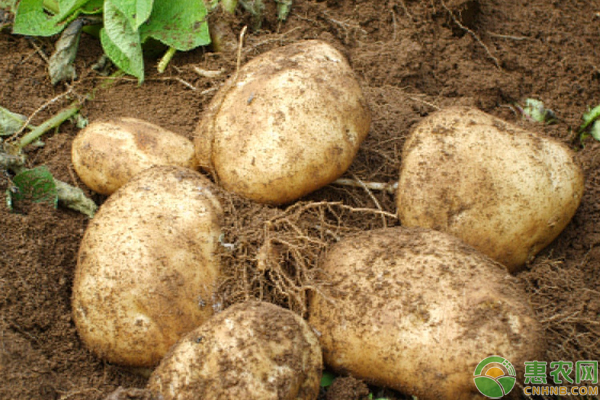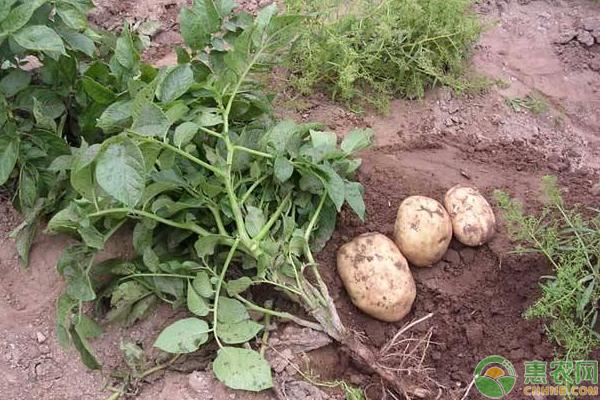Anthracnose is one of the many diseases of potato. If the disease occurs, it will seriously affect the quality and yield of potato. However, many growers tend to confuse anthrax during the planting process. Some think it is a phytotoxicity. It is a disease. The following are detailed symptoms and prevention methods of disease.

Harmful symptoms
Mainly damage to the leaves, forming a nearly round or amorphous auburn to brown necrotic plaque on the leaves, then turned into taupe, the edges are obvious, and merge to form a large necrotic plaque. In the case of severe damage, the tuber can also be infested, causing plant wilting and tuber rot.
Law of onset
It mainly uses mycelium to overwinter in seeds or sick bodies. When the conditions are suitable in the following year, conidia are produced, which spread by rainwater splash. Spores sprout to produce sprouts that invade through wounds or directly. In the later stage of growth, the pink viscous substance produced on the lesion contains a large amount of conidia, which is transferred to the sweet potato by rain water to re-infect. Because the seed potato can carry bacteria, disease-free plots or fields that have never been planted with potatoes, it may be ill after sowing the diseased seed potatoes.

Control method
First, level the land, apply more fully decomposed organic fertilizer, strengthen field management, timely watering and fertilizing, and promote plant robust growth.
2. Remove the diseased residues in the field in time after harvest and concentrate on destruction.
Medication reference
60% methyl sulfide · iprodione wettable powder (low toxicity) using 40-60 g / ag spray
70% Mi Xian·Binson Zinc Wettable Powder (Low Toxic) Use 90-120 g/mu spray
25% minos and carbendazim WP (low toxicity) using 75-100 g/mu spray
40% nitrile water dispersible granules (low toxicity) spray with 4000-4800 times
46% copper hydroxide water dispersible granules (low toxicity) using a dilution of 1500-2000 times spray
75% sputum · tebuconazole water dispersible granules (low toxicity) using 10-15 g / mu spray
60% azole ether·Dyson water dispersible granules (low toxicity) Spray with 1000-2000 times
2%, 4% pyrimidine nucleoside antibiotic liquid (low toxicity) use 1) 500-600 ml / mu, 2) 250 - spray

30% silazole · prochloraz aqueous emulsion (low toxicity) using 1500-2000 times liquid spray
20% benzophenone promethamine microemulsion (low toxicity) spray with 1000-2000 times solution
45% prochloraz microemulsion (low toxicity) using 750-1000 times spray
25% difenoconazole suspension (low toxicity) using 30-40 ml / mu spray
22.5% oxystroxane suspension (low toxicity) using a spray of 35-45 ml / acre
12.5% ​​epoxiconazole suspension (low toxicity) using 2000-2400 times spray
42.8% fluorobacteria·sputum ester suspension (low toxicity) using 20-30 ml/mu spray
35% fluorobacteria- tebuconazole suspending agent (low toxicity) using 25-30 ml / mu spray
42.4% azole ether · fluoroamide suspension (medium poison) spray with 2500-3500 times
250 g / liter of azoxystrobin suspension (low toxicity) using 1500-2500 times spray
The biggest feature of potato anthracnose is the long spot on the leaves. Do not planter the cockroaches on this leaf. In severe cases, the potato will die. Therefore, please refer to the above prevention methods and medications.
Yokelink providing high-quality wheel accessories, including Wheel boltss, Wheel nuts and Wheel spacers. Wheel spacers are essential components that are used to create additional space between the wheel hub assembly and the wheel. They are designed to improve vehicle stability, enhance handling, and allow for the installation of larger tires.

Wheel Accessories,Wheel Lug Nuts,Truck Wheel Spacers,Chrome Wheel Nuts
Ningbo Yokelink Machinery Co.,Limited , https://www.yokelink.com